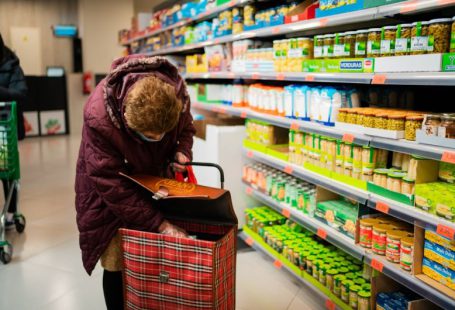Food traceability has become a crucial aspect of the food industry, ensuring the safety and quality of the products we consume. With the advancements in technology, the process of tracing food from farm to table has become more efficient and accurate than ever before. In this article, we will explore how technology is revolutionizing food traceability and its importance in safeguarding our health.
Enhanced Transparency through Blockchain
Blockchain technology has emerged as a game-changer in the realm of food traceability. By utilizing blockchain, every step of the food supply chain can be recorded and stored in a secure and transparent manner. This means that consumers can easily access information about the origins of their food products, including details about the farm where the ingredients were sourced, the production process, and the journey it took to reach their plate. This enhanced transparency not only builds trust between consumers and food producers but also helps in quickly identifying and addressing any issues related to food safety.
Real-Time Monitoring with IoT
The Internet of Things (IoT) has enabled real-time monitoring of various aspects of the food supply chain, ensuring that products are handled and transported under optimal conditions. IoT devices such as sensors and trackers can gather data on factors like temperature, humidity, and location, providing valuable insights into the quality and safety of the food being transported. In case of any deviations from the set parameters, alerts can be triggered, allowing for immediate corrective actions to be taken. This proactive approach significantly reduces the risk of food contamination and spoilage, thereby enhancing overall food safety.
Streamlined Record-Keeping with RFID
Radio Frequency Identification (RFID) technology has revolutionized the way food products are tracked and managed throughout the supply chain. RFID tags can be attached to individual items or packaging, allowing for easy and accurate identification and monitoring. This streamlines the record-keeping process, eliminating the need for manual data entry and reducing the chances of human errors. By scanning RFID tags at various checkpoints along the supply chain, stakeholders can quickly trace the journey of a product and ensure its authenticity and safety.
Improved Efficiency with Data Analytics
The massive amounts of data generated through food traceability technologies can be leveraged through data analytics to drive insights and improvements in the food supply chain. By analyzing this data, food producers can identify trends, predict demand, and optimize their operations for better efficiency. Data analytics can also help in identifying potential risks and vulnerabilities in the supply chain, enabling proactive measures to be taken to prevent food safety incidents. This data-driven approach not only enhances food traceability but also contributes to the overall sustainability of the food industry.
Ensuring Compliance with Regulations
In an increasingly regulated environment, compliance with food safety standards and regulations is non-negotiable for food producers. Technology plays a vital role in ensuring that companies adhere to these regulations by providing robust traceability systems that can track and verify compliance at every stage of the supply chain. By automating compliance checks and audits, technology not only reduces the burden on food producers but also helps in maintaining the highest standards of food safety and quality.
Empowering Consumer Choices
At the end of the supply chain are the consumers, whose demand for transparency and safety in food products is driving the adoption of traceability technologies. By providing consumers with access to detailed information about the food they consume, technology empowers them to make informed choices about their diet and lifestyle. This increased awareness fosters a culture of accountability and responsibility among food producers, who are compelled to prioritize the safety and quality of their products to meet consumer expectations.
In conclusion, food traceability, enabled by technology, is a critical component in ensuring the safety and quality of the food we consume. By enhancing transparency, enabling real-time monitoring, streamlining record-keeping, leveraging data analytics, ensuring compliance, and empowering consumers, technology is reshaping the food industry for the better. As we move towards a more interconnected and data-driven future, food traceability will continue to play a pivotal role in safeguarding our health and well-being.





